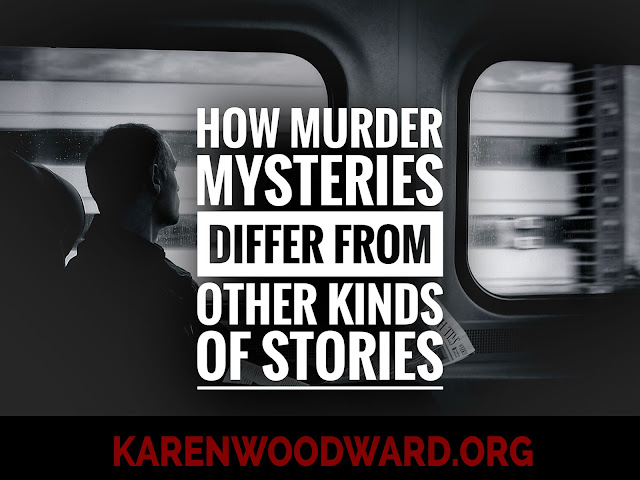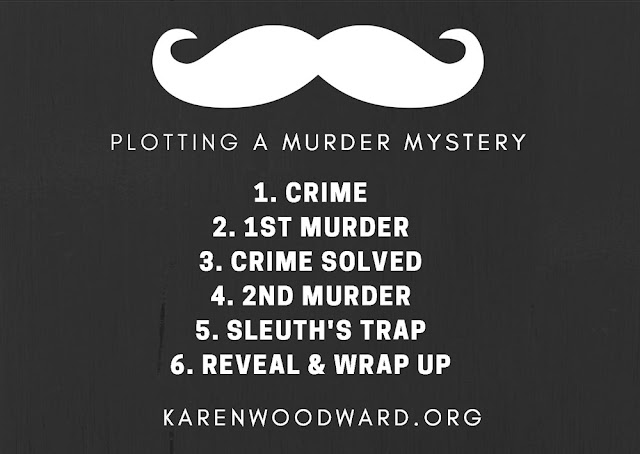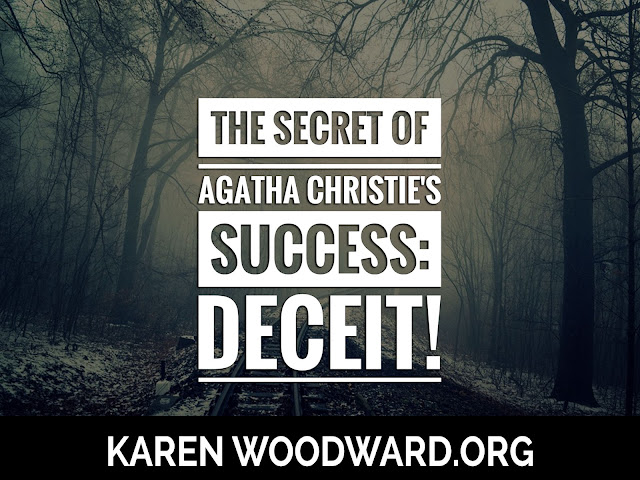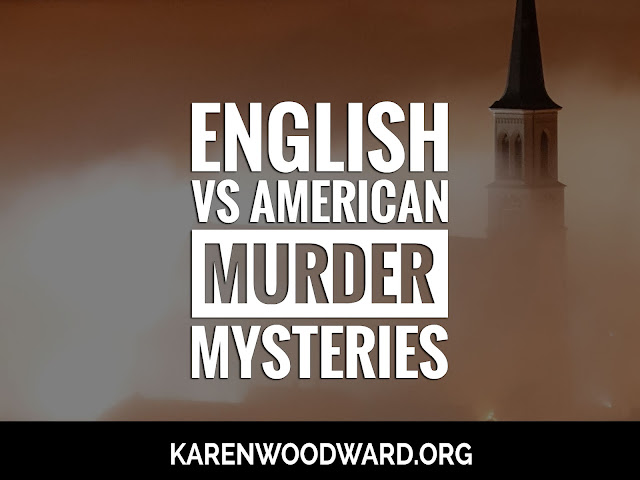Today I talk about how to apply some of the tried and true principles fiction writers routinely use. Why? Because I want see to what extent we can apply them to non-fiction. But, first, let’s look at ...
The Power of Words
All writers are readers first so we all have our favorite authors. One reason I wanted to write was because I wanted to enthrall readers the way my favorite authors had enthralled me. One thing I was fascinated by is how words—just words!—could make me laugh or cry or shudder with dread.
For instance, after I finished Stephen King’s IT I was scared to go to the bathroom in the middle of the night (I was a child)—and became convinced that if I allowed my toes to inch their way over the edge of my mattress something black and scaly that lived in the perpetual blackness under my bed would bite them off, snickedy-snack.
How did Stephen King do that? How did his words produce such (delicious) fear in me? Writing is the blackest of magic because it allows one person to make little ink-marks on paper and at the other end produce a terrified child sitting in the middle of her bed desperately trying not to pee herself!
I’ve written about this before in regards to Stephen King (see:
The Magic Of Stephen King: How To Write Compelling Characters & Great Openings), but today I’d like to take a look at another writer whose prose I admire: Chuck Wendig.
Wendig has certain flourishes that make me wish I could do that too. I know, different writers are, well, DIFFERENT. And difference is great. We should each of us try and develop our own voice rather than covet that of another. True. But I still find myself reading Chuck Wendig’s posts with a wee bit of envy creeping around the edges of my dark writer's soul.
(I’ll get the warning out of the way now: Chuck Wendig’s blog is NSFW because of adult language and a fertile, extremely creative, imagination! Visit and read at your own risk:
Terribleminds.com.)
Fiction and nonfiction writing are more similar than they are different.
I’ve always felt that good writing is good writing whether we’re talking about a short story that makes you want to crawl into your bed and cry for three days or a darn good recipe for lemon meringues (I’m looking at you
Nigella Lawson).
I feel that whatever principles are at work when (slightly shaken and knowing I’ve condemned myself to a month of nightmares) Stephen King captivates me with his prose, or I am kept spellbound by an article in The New Yorker (for example,
Anthony Bourdain’s Moveable Feast, by Patrick Radden Keefe) or I empathically bond with Nigella Lawson over the necessity of fluffy pancakes in the morning, calories be damned! When ANY kind of writing pulls me in, leaves me spellbound, whether that writing be fiction or nonfiction, recipe focused or a murder mystery, that the same essential core elements are at work.
So let’s test this theory, shall we? :-)
5 Elements of Character
For years I’ve directed folks to Jim Butcher’s posts on writing over on his
Livejournal account and, IMHO, one of his best is
Characters where he lays out what it is that makes a character interesting.
Now while I totally and completely agree that the following, as JB puts it, “consistently make a team contribution” to a terrific character, I think they may also apply more broadly. But more on that later. He’s the team:
A. Exaggeration
B. Exotic Position
C. Introduction
D. Verisimilitude
E. Empathy
(By the way, I’ve written about these in my article:
How To Write Characters Your Readers Will Love: Character Checklist)
Now let’s test this theory using Chuck Wendig’s writing.
Terribleminds.com
I love Chuck Wendig’s writing. It’s got attitude. It bites and snarls and breathes fire. It’s different. Snarky.
He knows how to grab readers, how to draw them in. And I would like to examine—or attempt to examine—HOW he does it. What qualities does his writing have that make me love it? How does it work?
So I’m going to present you with (brief!) passages of Chuck Wendig’s work that I particularly loved and see if it falls into one of Jim Butcher’s categories. I can’t emphasize enough that this is an experiment!
Now, I’d like to be clear about something, these are passages of CW’s writing that I loved. You might not, and that’s oaky! Also, you might disagree with how I analyze them, what categories I put them under. That’s okay too! If you’d like to share, tell me how you’d categorize them. I guess what I’m trying to say is don’t take this too seriously, it’s just my own musings. In this area truth really is in the eye of the beholder. If it works for you then it works, and it it doesn’t then it doesn’t and that’s okay too.
A. Exaggeration
Here’s a passage I think nicely demonstrates how exaggeration can help spice up a passage.
“You look at it [a tiny house], and you think: I can do that. I can get healthy. I will juice cleanse and then eat asparagus and chia seeds for the rest of my life, [...] I’ll be healthy as a horse. A robot horse. A robot horse who will live forever and be the handsomest robot horse ever. I’ll lose this weight. People will admire my lean frame and my culinary judiciousness. I’ll eat like a rabbit. I will defy gluten and cast sugar into the sea and JUST SAY NO to pizzas and ice creams and tacos and all I will eat are these rods of asparagus and these spoonfuls of chia seeds and once a week for dessert I will treat myself with these delicious crackers made from ancient grains [...]. For sweetness, I will mist them with agave syrup the way the lady at the fragrance counter mists you with perfume as you walk past.”[1]
There’s a lot going on in there besides exaggeration. Chuck Wendig loves lists, and he especially loves lists that grow increasingly exotic/grotesque (but grotesque in a good way!) toward the end. For example ...
B. Exotic Position
Exaggeration and Exotic Position are by no means mutually exclusive. You noticed in the above quotation that there was exotic position as well:
“I’ll be healthy as a horse. A robot horse. A robot horse who will live forever and be the handsomest robot horse ever.”
Also:
“My family loves it. And they’re not just saying that because of the trap doors underneath their chairs that trigger whenever they say anything negative about me or my food.”[2]
Also:
“Enter you people. Hunters of tiny houses. Cave-humans once stalked lions on the veldt, but you intrepid hunters track itty-bitty homes — houses compressed down like coal until they become the shining diamonds of Spartan living.” [1]
Also:
“Now, the nice way to put it would be: writing means taking risks. Risks are — *bites lip, narrows eyes, smolders generally* — sexy. Nngh. Yeah. Take a risk with me, baby. Drive fast. Live loose. Eat raw cookie dough naked in the saddle of a galloping velociraptor. Boom. Risks. Yes.”[4]
That’s. Just. Awesome!!! It’s like a mini story. Which reminds me of something Stephen King said in On Writing[http://amzn.to/2movcNh] about paragraphs being the atoms of storytelling, but I’ll save that for another post.
As you can see, these examples involve Exaggeration as well as Exotic Position. As Jim Butcher writes, “While this [exotic position] is in actuality just another facet of exaggeration, there are enough differences to make it worth its own heading.”
What are these differences? JB says it hinges on: “Locating your character in an unusual location or situation.”[3]
In one of the quotations I just gave CW has his family perched atop trap doors that spring open at the slightest hint of negativity, I think that qualifies as an unusual situation!
But JB doesn’t stop there. He mentions several lenses we can view this through: social, geographic, intellectual and moral.
I’d say the trap door quotation is both social and moral. If CW had perched his family on the edge of a volcano we could add in geographic (though I don’t think there’s any pressure to hit more than one category at the same time!).
Intellectual ... the movie Limitless[http://amzn.to/2liBEA5] (2011) comes to mind. You know, that movie about the guy who takes a pill and becomes inhumanly smart? That’s exotic position for you! He’s not just smart, he’s the smartest guy in the world, and it’s killing him!
According to JB here’s the key to grabbing reader interest: Choose something “unusual enough to be memorable and interesting.”[3]
C. Introduction
Jim Butcher writes:
“You never get a second chance to make a first impression. When your reader meets any given character for the first time, it is critical to make sure you get the bare bones of your character into his head immediately. By establishing your character firmly, you'll make the whole process of virtual-story-world-creation move more quickly and easily. There are multiple techniques for planning a strong introduction, but I'm only going to hit on the strongest one: CHARACTERISTIC ENTRY ACTION.”[3]
This applies to introducing characters, but I think it also might to non-fiction as well. For instance, the first time a person picks up a particular story you’ve written you—by way of your prose—are making a first impression.
For example, in the above quotation try substituting “voice” for “character,” that works too!
So, what general principles can character introductions tell us about how to write prose that sparkles regardless of whether we’re writing fiction or non-fiction? I’m going to answer that question but, first, let’s look at the role conflict plays in developing a unique character.
Conflict and contrast.
A great character is a unique character. Which means we need to make sure they are different from each and every other character in our story. How do we do this? By creating conflicts that are UNIQUE TO THEM. One could argue that a character JUST IS her conflicts. Her essence is laid bare by how that character handles the obstacles that are placed in her way. These are the obstacles that keep her from obtaining what she wants most, from achieving her heart’s desire. (And, of course, this is true in real life! How one acts when one’s deepest desires are thwarted shows who one really is, it bares one’s soul.)
What I’m going to take away from this for non-fiction writing is: be yourself. If you let you be you then, since you’re unique, your writing will be too. This is all about finding your voice and I know that sounds nebulous and frustrating, but one thing that CW has done, and for me it’s the appeal of his writing, is he’s definitely found his voice! And, which is just as important, having found it he’s not afraid to use it! He lets it out to play. It’s big and bold and he doesn’t shrink back from that.
In the following I’d like you to read the quotations but, more than anything, look at the WAY CW writes. Look at the things he leaves out, listen to the words, the flow, the rhythm. The big flamboyance of it. The following quotations were drawn from CW’s (excellent!) essay: “An Open Letter to Tiny House Hunters.”[1] Notice how he (a writer of horror) uses words and phrases suggestive of death and confined spaces:
“adorable little tomb” (my favorite!)
“Because sure, kids and animals like nothing more than being crammed together in a piano crate, forced to share their limited oxygen while Mommy and Daddy make clumsy, grunting love in the casket-sized open-air loft above everybody’s heads...”
“the ashes of your parents”
“...your bed is going to be a claustrophobic morgue-drawer nightmare.”
“...yes, that is a tiny closet, and it will hold no more than the suit or dress in which they will bury you.”
“Your dogs want to run and jump and — I mean, they’re not hamsters, you understand that, right? They’re not hamsters, and you’re not diminutive little fairy creatures, and tiny houses are not houses, they’re GI Joe playsets, they’re hipster sepulchers, they’re absurdist shoebox dioramas.”
Look at the last quotation. You feel that, right? The rhythm. You feel how it sweeps you up and carries you along with it.
D. Verisimilitude
I’m going to adopt JB’s convention when talking about verisimilitude and just call it “V-factor,” which is infinitely more pleasurable to type. If your character has V-factor it means they act believably. JB says one needs to “convey to the reader the sense that your character is a whole, full person with his own life outside the purview of this particular story.”
How do you do this? Through sequels[http://blog.karenwoodward.org/2014/04/parts-of-story-sequels-their-structure.html]:
“The single most important technique for doing that [creating believability] is through showing your character's: 1. EMOTIONS 2. REACTIONS and 3. DECISIONS. When something happens in your story, a character with a decent V-factor will react to it. The reader will see his emotional reaction played out, will gain a sense of the logic of a question or problem, and will recognize that the character took a believable, appropriate course of action in response.”[3]
Also, one increases V-factor through the use of tags and traits. (Which I’ve written about here: Tags & Traits: Characterization And Building Empathy[http://blog.karenwoodward.org/2013/06/tags-traits-characterization-and-building-empathy.html].)
The point is: be consistent with how the character makes decisions. And IF your character’s behavior varies, if he makes an unusual decision that’s okay, you just need to show why this is, you need to show what he’s reacting to. Also, be CONSISTENT with tags and traits. Don’t change the color of your character’s eyes halfway through the story, that’s an obvious no-no, but also have the character’s reactions be consistent. If he always leers at the pretty women he passes but he doesn’t leer this one time, why? Was he in deep thought, had the last girl he leered at beaten him up previously, is there something wrong with his eyes? Is he under the influence of a spell?
You might be thinking that’s all well and good but how could we apply this to non-fiction? Great question!
Every essay is, essentially, an argument. Take CW’s essay about Tiny Homes.[1] He’s saying look, live your life—you do you—but I think it’s a crazy idea and here’s why. In THIS essay I’m saying, Look, these techniques are great for fiction but non-fiction writers can get something out of them too!
Beyond that, for ANY argument, consistency is key. Be clear about what the facts are (this is what a tiny home is, this is how many square feet you’ll have, this is the kind of toilet you’ll have, this is the size of your closet, and so on), be clear about the inferences you draw from those facts (you’ll never be able to eat beans again and your dogs will hate you) and be clear about how these are linked to your eventual conclusion (if you want your family to be happy then don’t buy a tiny home).
E. Empathy
Jim Butcher writes:
“If you can manage to create a vivid character in a reader's mind, then establish him as someone believable, you have a real shot at the Holy Grail of character design. If you do your job, you will create a sense of empathy in your reader for your characters. This is what makes people burst out laughing while reading. It's what makes readers cry, or cheer, or run off to take a cold shower.”[3]
There’s an essay Stephen King wrote, and I wish I could tell you the name of it but I don’t remember. It was shoved into the back of one of his novels. In it he talked about his early days, about finding the books his dad liked to read and how that influenced him as a child. He talked about his mom and how she was (in the best possible way) a little bit crazy, but in a way that made her unique and very special. And he talked about how that specialness leeched away when she moved back home to care for her ailing mother. At the end of the essay he talks about his mother’s death—and, sure, I remembered my own mother’s death and cried with him here—but the real gut wrenching part comes at the end of the piece. I won’t spoil it for you, I think it is some of King’s best writing, the way he wove the theme through the piece and brought everything home at the end.
My point is that I know from personal experience—as I’m sure you do—that non-fiction writing can evoke strong emotional reactions. I think this is a hallmark of all good writing. Which, of course, isn’t to say that if no one cried while reading “An Open Letter to Tiny House Hunters” that it was a flop. But, that said, CW’s piece did succeed in evoking emotion in me. At the end of the post I saw Tiny Houses a bit more like painted tombs than viable places to live which is to say that, by the end, the phrase “tiny home” evoked a cold shudder of dread.
Okay, so, that was the first part. We just looked at how five parts of character—exaggeration, exotic position, introduction, verisimilitude (V-factor) and empathy—can not only help develop characters readers will care about, but that they can also be useful points to keep in mind when writing non-fiction.
In the second part I want to go over what I’m calling “Interesting Flourishes” but only because it’s past my bedtime and I can’t think of a more creative title!
Interesting Flourishes
1. Lists of the increasingly absurd. Repetition. Meter. Rhythm.
For example:
“You know the things that give you solace. Friends. Loved ones. Ice cream. A Netflix binge. An oil drum full of schnapps.”
No commentary required!
2. Be fearless and live on the edge.
I think part of this could be a personality thing. Even when I write I’m kinda shy and tend to run various possibilities, various sentence constructions, through my head before I pick the one that I think PROBABLY won’t get my book either put down with a bored sigh or thrown across the room in a fit of aggrieved rage.
Which is probably why the following passage hit me like a bullet between the eyes:
Tempt failure.
March right up to it. Always write as if you’re about to fall on your face. Add fire. Bring the char. Toss in a weird ingredient. I wrote several _meh_ books before I finally hit with Blackbirds — and when I hit with Blackbirds, it was because I had lost the capacity to care about fucking up. I felt I had already tried everything safe, everything expected. I’d already walked all the paths and followed every map and I still wasn’t writing anything of substance, so I chugged some whiskey, bit a belt, and went hard into that story because I felt like I had nothing to lose. I no longer cared if I failed. That allowed me to no longer be hesitant, to dismiss the fear of failure because I certainly wasn’t succeeding — hard-charging into that unseen fog was liberating, and it produced not only a successful book, but one whose series continues today. Using present tense inside Star Wars was controversial, in part because tie-in-fiction tends to not go that way. Some hated that choice, some loved it, and that’s where I’d rather be. I’d rather be in a place where some people love the book and some people despise it instead of everyone saying, “It was fine, sure, it was a book, and I read it, and now I forget it.”[4]
One thing that stands out to me here is the honesty with which it was written. I think this ties back into what I said before about V-factor and empathy.
3. Putting it together: Building to a punch.
I touched on this, above, but I think it’s important enough to revisit the point.
“Some [tiny houses] look like little cabins! Others like chic trailers! Others still are shipping containers, or hobbit houses, or weird Transformers that expand and contract like a breathing lung.”
The above has a shape all it’s own. It has rhythm. We start out with a perfectly good, perfectly ordinary sentence and end up with transformers and breathing lungs!
“You then say, ‘This is cute,’ but you say it in the way someone says it when they’re looking at someone wearing a homemade sweater. You don’t mean it. You look terrified, like an otter trapped in a cardboard tube.”
I love the comment about the homemade sweater because ... yeah. It’s true. Again, we’ve gone from somewhere ordinary and placid to a place where terrified baby otters are trapped in cardboard tubes.
4. Alliteration
“I admire your desire to lean into austerity and trim the fat from your life, but unless you have a huge property, shoving a family of 6 into one of these turtle terrariums is something some people have to do, but they wouldn’t choose to do it, y’know? [emphasis mine]”
5. Comparison. A is like B.
“Right now, for me — and maybe for you — making art is like oral surgery on a rabid bear.”
That’s it! I hope I’ve made some sense. This is an epic post—at least, it’s epically long! I want to come back and revisit some of these themes later. I hope you found something in it helpful. :-)
Every post I pick something I love and recommend it. This serves two purposes. I want to share what I’ve loved with you, and, if you click the link and buy anything over at Amazon within the next 24 hours, Amazon puts a few cents into my tip jar at no cost to you. So, if you click the link, thank you! If not, that’s okay too. I’m thrilled and honored you’ve visited my blog and read my post.
Today I'd like to recommend any of Chuck Wendig's books! He's a fabulous writer but be warned: He writes horror. Psychological horror, sure, but also horror of the more gut twisting varieties. Be warned. :-) Though, that said, he has written three Star Wars books!

Notes:
1.
An Open Letter To Tiny House Hunters, by Chuck Wendig.
2.
You Want To Marry This Breakfast Fried Rice And Have Its Babies, by Chuck Wendig.
3.
Character, by Jim Butcher.
4.
Write Unafraid, Without Fear Of Failure, by Chuck Wendig.








